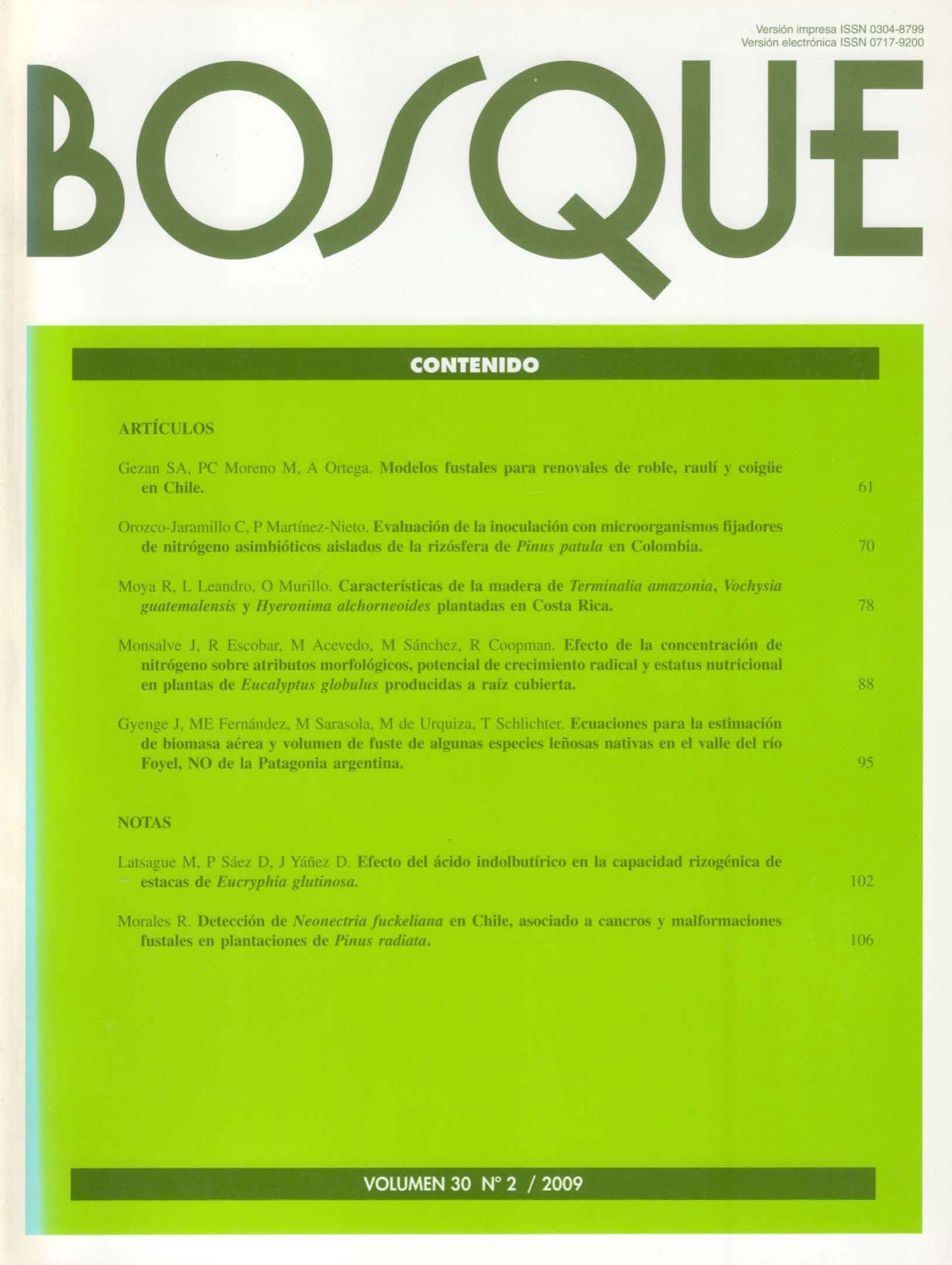Características de la madera de Terminalia amazonia, Vochysia guatemalensis y Hyeronima alchorneoides plantadas en Costa Rica
Contenido principal del artículo
Resumen
El objetivo del presente estudio fue evaluar las características estéticas, físicas y mecánicas, así como la durabilidad natural de la madera de Terminalia amazonia, Vochysia guatemalensis y Hyeronima alchorneoides provenientes de árboles creciendo en plantaciones de rápido crecimiento en la región del trópico húmedo de Costa Rica. Un total de 10 árboles por especie de T. amazonia, V. guatemalensis y H. alchorneoides fueron seleccionados aleatoriamente y cortados como material para determinar las propiedades de la madera. Se encontró que la madera de este tipo de árboles presentaba baja calidad estética en comparación con la madera comúnmente usada en el mercado de este tipo de especie del bosque natural. Ello porque poseen poca cantidad de duramen y su color es claro. La madera de árboles creciendo en condiciones de rápido crecimiento de V. guatemalensis, T. amazonia y H. alchorneoides en Costa Rica mostró propiedades inferiores que la madera proveniente de los bosques naturales. Sin embargo, la diferencia de edad entre las procedencias es la causante de los resultados. T. amazonia de plantaciones mostró características promisorias para procesos industriales debido a su facilidad de secado, preservación y relativamente altas propiedades mecánicas de su madera. La durabilidad natural de estas especies de árboles jóvenes en el trópico húmedo de Costa Rica puede ser incrementada por la preservación de la madera utilizando el método vacío presión, particularmente debido al alto contenido de albura que es fácil de tratar con preservante.

